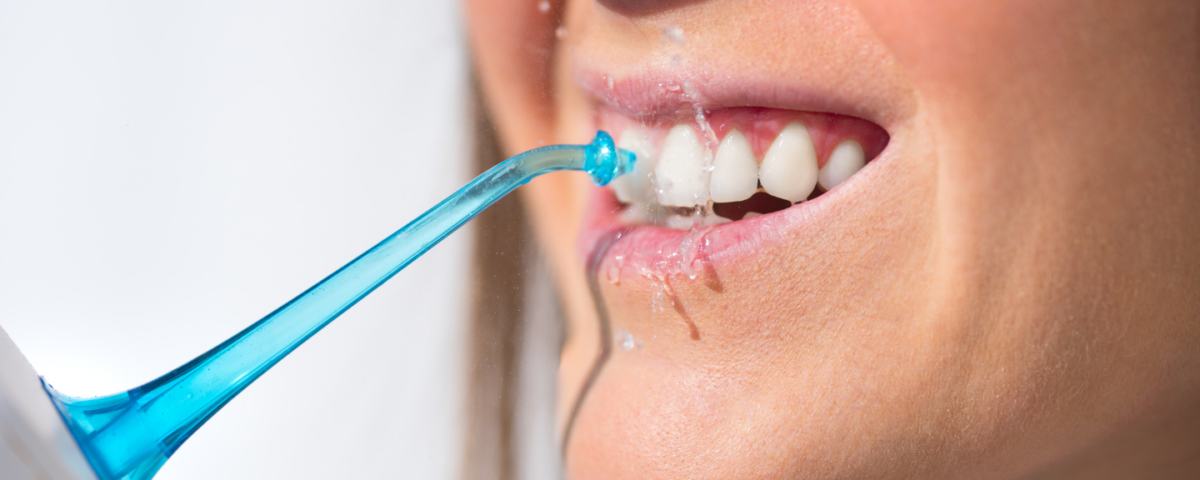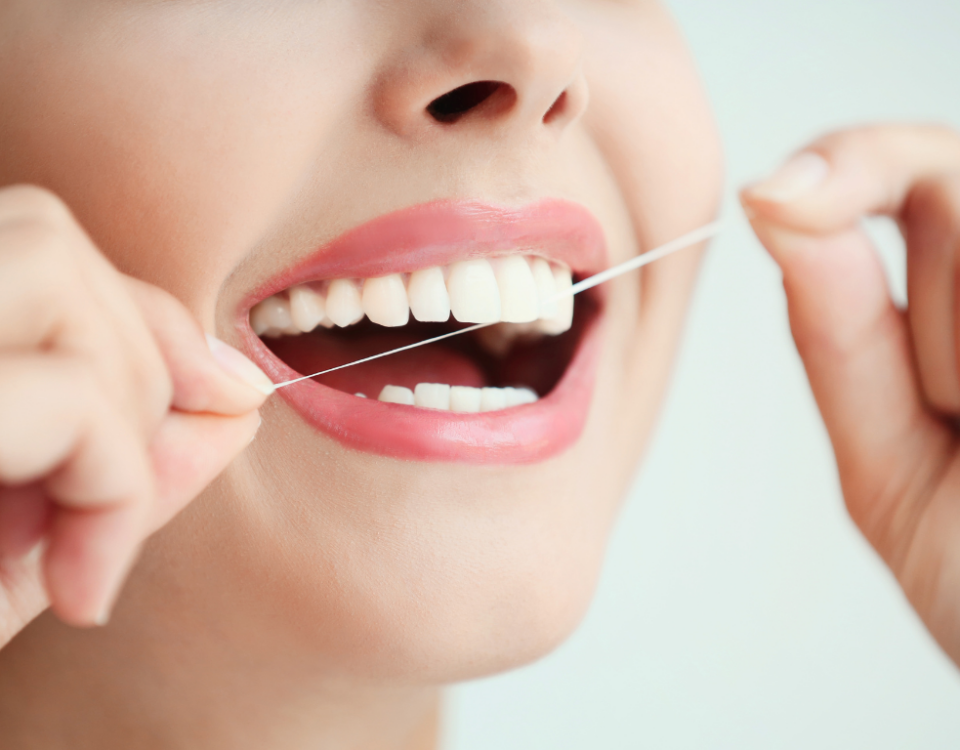
How Long Does Dental Bonding Last
September 24, 2023
How Often Do You Need a Dental Check-Up?
October 31, 2023Key Takeaways:
Effectiveness of Water Flossing:
While water flossing is a convenient and effective tool for removing debris and reducing bacteria between teeth, it is most effective when used in combination with traditional flossing.
Oral Health Benefits:
Incorporating water flossing into your dental care routine can help prevent gum disease and improve overall gum health.
Complementary Use:
Traditional flossing remains essential for fully cleaning tight spaces between teeth and along the gumline. A dual approach using both methods can lead to better oral health outcomes.
Should you pay for a pricey water flosser? Do these work as well as string or tape flossers? Find out if water flossers can work just as well as standard floss or if they waste money.
What Does a Water Flosser Do?
A water flosser uses a powerful stream of water to clean food particles from between the teeth. Like string floss, water flossers can also remove plaque from your teeth. However, once plaque hardens into tartar; no home flossing method can remove it. You will need a professional dental cleaning to get rid of it.
Is Water Flossing Effective as Regular Floss?
Water flossing can be as effective as regular flossing when used correctly. In fact, a study of the two methods found equally effective removal of plaque from the teeth after using them. However, this study only looked at plaque removal between teeth and not below the gumline.
String floss can reach under the gums to clean out food particles from that area. Water flossing often cannot access this portion of the mouth, which means that it may not be as effective at completely cleaning all surfaces of the tooth above and below the gums.
Pros and Cons of Water Flossers
Water flossers, as do all dental care methods, have several pros and cons. Recognizing where a flosser has advantages and disadvantages helps you to make a better decision about using this dental tool. If you have questions about the specific pros and cons of water flossers for your situation, talk to your dentist.
Advantages of Water Flossers
Water flossers have many advantages, making them an excellent tool for some.
First, water flossers only require one hand to use, while floss needs two hands. Therefore, people who have mobility issues or caretakers of those who cannot floss on their own can effectively use a water flosser as an alternative.
Second, the water flows easily between teeth and around orthodontic appliances. Therefore, these flossers may be easier for those wearing wire braces to clean between their teeth.
Finally, those with tight spaces between their teeth may find flossing easier with a water flosser than string floss. It is a helpful tool if a water flosser is the only means that someone will floss between their teeth due to discomfort using string floss.
Water flossers are a great solution to make flossing between teeth accessible to everyone, but these tools are not perfect.
Disadvantages of Water Flossers
The biggest downside to water flossers is the price. Compared to string floss, water flossers cost much more to purchase. For some people, the initial investment alone is enough to dissuade them from buying one of these appliances.
Second, as with all tools used to clean teeth, water flossers are only effective when used correctly and paired with string floss to reach beneath the gums. If you want to use a water flosser, make sure to read and follow all directions included with your flossing system.
Finally, the water spraying action can get you wet or make a mess in your bathroom when using the flosser. Some people don’t mind this downside to the system, especially if water flossing is the only way that they can clean their teeth.
Dos Using a Water Flosser
If you choose to add water flossing to your home dental care routine, make sure to do the following:
- Select a water flosser model with the American Dental Association (ADA) seal of acceptance on it.
- Follow the user’s guide for how to set up your water flosser.
- Use the correct flossing head for your needs. Some units come with water flossing tips for those with braces or other orthodontic work.
- Floss with string floss at least once a day in addition to using the water flosser to remove the most plaque from your teeth.
- Lean over the sink when using the water flosser to avoid causing a water mess in your bathroom.
- Fill the reservoir to the fill line. Doing so should give you enough water for two minutes of water flossing.
- Empty the water reservoir after you finish flossing.
- Keep regular dental cleaning and exam appointments because no amount of oral care at home can replace professional preventative dental services.
Things to Avoid When Using a Water Flosser
Using a water flosser correctly is the key to getting the most benefits from it. When using your water flosser, watch out for the following things that could make the system less effective:
- Don’t start the water flosser at the highest setting. You could harm delicate tissues in your mouth. Start at a low setting and progressively move it up.
- Don’t skip brushing and string flossing because you use a water flosser.
- Don’t rush through water flossing. Just like using string floss, you need to get between all your teeth to remove plaque and food.
Partner Flossing with Brushing and Regular Dental Visits
Whether you use only string floss or pair string and water flossing together, cleaning between your teeth needs to be part of a robust routine of dental care.
First, make sure to brush twice a day for two minutes. This vital step helps clean off the surfaces of your teeth and protects them from cavities. However, because brushing doesn’t reach deep in between teeth, you must always floss daily, too.
Use string floss once a day, at least. Add water flossing once or twice a day to your routine to get the spaces between your teeth cleaner or if you have difficulty using string floss.
Finally, connect with your dentist and see them twice a year. Preventative exams and cleanings keep your teeth their healthiest. Cleanings remove tartar and plaque, and exams can find problems before you have severe dental damage.
Water flossing can be a part of a healthy oral care routine as long as it compliments your existing habits.
Come See Us at Langley Dental Care for Preventative Cleanings and Much More
You should always include regular dental exams and cleanings with your brushing and flossing habits, regardless of the type of floss you use. Only during professional dental cleanings can you have tartar removed from your teeth.
If you don’t have a regular dentist, come see us at Langley Dental Care. We offer comprehensive dental services, including cosmetic and restorative treatments with regular exams and cleanings. Contact us to schedule your visit. We can’t wait to see you.



